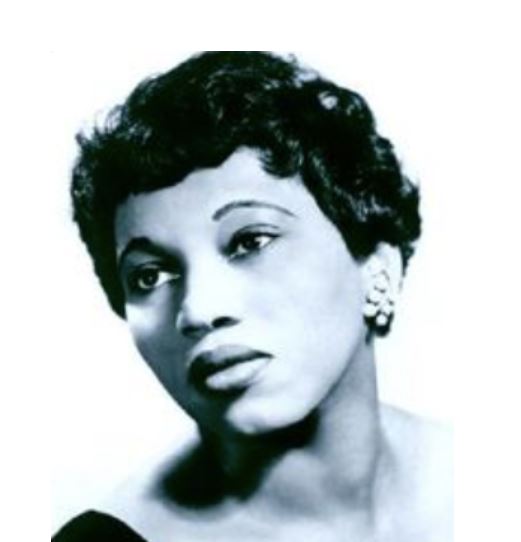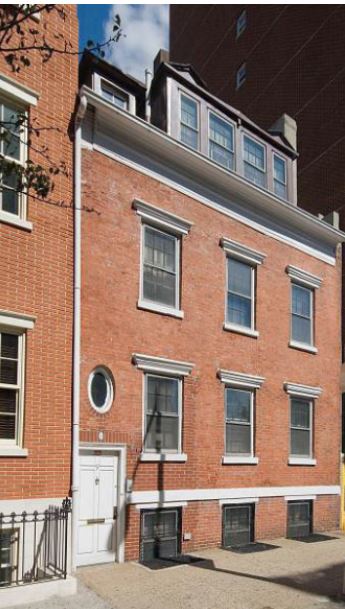Leontyne Price Shatters Racial Barriers in Met Opera Debut
Leontyn Price, the groundbreaking, world-renowned soprano and longtime Greenwich Village resident, made her debut at the Metropolitan Opera on January 27, 1961. Ms. Price was one of the first internationally recognized African-American opera stars. Her career broke through racial barriers at another time in our history when the United States was experiencing intense racial strife and conflict.

One of the most beloved artists in Metropolitan Opera history, Leontyne Price made her debut as Leonora in Verdi’s Il Trovatore, alongside tenor Franco Corelli as Manrico, in his first appearance with the company. Ms. Price would go on to sing in more than 200 performances in a broad range at the Met: from Donna Anna in Mozart’s Don Giovanni to Elvira in Verdi’s Ernani to the title role of Puccini’s Tosca. Only six seasons after her debut, she made Metropolitan Opera history, appearing as Cleopatra in the world premiere of Barber’s Antony and Cleopatra to inaugurate the new Metropolitan Opera House at Lincoln Center.
The original Metropolitan Opera House, sometimes referred to as “the Old Met”, was located at 1411 Broadway, occupying the whole block between West 39th Street and West 40th Street on the west side of the street. Designed by architect J. Cleveland Cady, it was built in 1883 and demolished in 1967.

It is impossible to speak of Ms. Price’s career without noting that she was the first African American superstar opera singer, and one who shattered the racial barrier at the Metropolitan Opera. Her debut was such a success that the audience gave her a standing ovation that lasted over 40 minutes! Her incredible voice became indispensable to the Met, and the company began to plan its season around her — a practice that continued for some time, as noted above.

Leontyne Price was born in Laurel, Mississippi on February 10th, 1927. Her father James worked in a lumber mill and her mother Katherine was a midwife who sang in the church choir. Leontyne was the focus of her parents’ intense pride and love. Given a toy piano at the age of three, she began piano lessons with a local teacher at age five.
When Leontyne was 14, she was taken on a school trip to hear a recital in Jackson, Mississippi by Marion Anderson, a black contralto who was a critical figure in the struggle for black artists to overcome racial prejudice in the United States during the mid-twentieth century. This proved to be a life changing experience for Ms. Price. “The minute she (Anderson) came on stage, I knew I wanted to walk like that, look like that, and if possible, sound something near that,” she told an interviewer in 2008.
In the fall of 1948, Leontyne Price enrolled at the Juilliard School and won a scholarship. She was admitted to the vocal studio of the venerable Florence Page Kimball, who remained her principal voice teacher. In early 1952, she sang her breakout performance as Mistress Ford in a Juilliard production of Verdi’s Falstaff. Virgil Thomson, an American composer and critic, heard a performance and cast her in a revival of his all-black opera, Four Saints in Three Acts. After two weeks on Broadway, the production of Saints went to Paris. Meanwhile, Leontyne had been signed to sing Bess in a new production of George Gershwin’s Porgy and Bess, and her international career was launched like a rocket.
As one of the company’s leading prima donnas, Ms. Price accompanied the Met on tour, including to several Southern cities where theaters were segregated. Her presence there was an important factor in changing the discriminatory policies. In fact, the rise of her Met career coincided with the Civil Rights Movement in the United States, and she was proud to be a part of it. Along with her exceptional artistic achievements, it remains part of her remarkable legacy.

It is an extraordinary footnote that Ms. Price was able to buy her Greenwich Village townhome in 1961, well before the Fair Housing Act of 1968. The Fair Housing Act prohibited discrimination concerning the sale, rental and financing of housing based on race, religion, national origin or sex. Prior to 1968, African Americans and other minorities were chronically subjected to race-based housing discrimination. Those who challenged them often met with resistance, hostility, and even violence. Organizations such as the National Association for the Advancement of Colored People (NAACP), whose original headquarters at 70 Fifth Avenue is finally under consideration by the LPC for landmark designation, after Village Preservation has pressed for 2 1/2 years, lobbied for new fair housing legislation to be passed, and only in the aftermath of the assassination of Dr. Martin Luther King, Jr. find that finally occur. Purchasing the townhouse in 1961 is yet another revolutionary aspect of Ms. Price’s life and legacy. What she achieved both on and off the stage was, quite simply, extraordinary.

Ms. Price sold her Vandam Street townhouse in 2013 and moved to Maryland to be close to her family.
Francis Mason, the respected editor, writer, cultural diplomat, and dance critic once quipped that he could hear Ms. Price vocalizing from his home on Charlton Street, one block away! Don’t we wish that we could still hear her dulcet tones pouring from a window on Vandam Street?
Leontyne Price was summoned from her retirement in 2001 to sing a memorial concert for the victims of 9/11 at Carnegie Hall. She was 74 at the time and her voice was as rich and strong as ever. You can listen to that astonishing performance here. Truly she was the Voice of a Century.

Greetings also from the Village as your (new) neighbor. Loved seeing this! Small clarification, though: the caption saying “Ms. Price as Aida” ought to read “Ms. Price as Cleopatra,” since that is a photograph from the Samuel Barber opera, captured by Met photographer Louis Melançon, as documented in my film “Samuel Barber: Absolute Beauty” at http://www.samuelbarberfilm.com